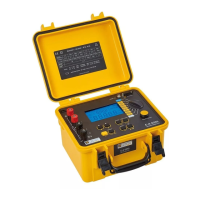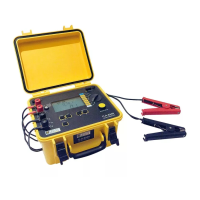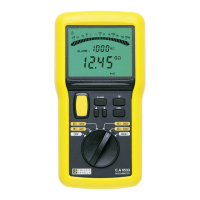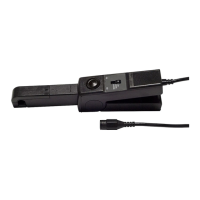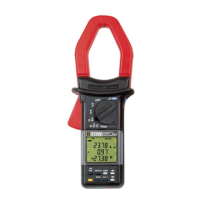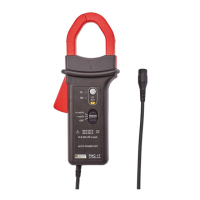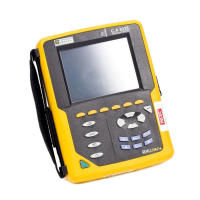Do you have a question about the Chauvin Arnoux 6250 and is the answer not in the manual?
Defines measurement categories IV, III, and II based on installation source.
Overview of the instrument's front panel controls and connectors.
Details the primary and secondary functions of each key on the instrument.
Explains the dual liquid crystal display and its various symbols.
Describes the RS 232 serial interface capabilities for data transfer.
Step-by-step guide on how to connect and perform a resistance measurement.
Explains inductive, non-inductive, and auto-triggering measurement modes.
Details the principle and procedure for temperature-compensated resistance measurement.
Describes how to activate and configure measurement alarms.
Instructions for saving and recalling stored measurement data.
Guide to configuring instrument settings and parameters via the SET-UP menu.
Explains the modes for printing current or stored measurement results.
Comprehensive list of error codes and their meanings for troubleshooting.
Details accuracy, resolution, measuring current, and voltage drop for all ranges.
Information on the instrument's rechargeable battery and charging system.
Specifies operating and storage conditions like temperature and humidity.
Outlines the instrument's physical dimensions and weight.
Lists the safety and EMC standards the instrument conforms to.
Procedures for servicing, including battery replacement and fuse checks.
Details the maintenance menu, password, and metrological check procedures.
Step-by-step guide for adjusting the instrument's measurement parameters.
Instructions for updating the instrument's internal software via PC.
Guidance on returning the instrument for repair, both in and out of warranty.
Defines measurement categories IV, III, and II based on installation source.
Overview of the instrument's front panel controls and connectors.
Details the primary and secondary functions of each key on the instrument.
Explains the dual liquid crystal display and its various symbols.
Describes the RS 232 serial interface capabilities for data transfer.
Step-by-step guide on how to connect and perform a resistance measurement.
Explains inductive, non-inductive, and auto-triggering measurement modes.
Details the principle and procedure for temperature-compensated resistance measurement.
Describes how to activate and configure measurement alarms.
Instructions for saving and recalling stored measurement data.
Guide to configuring instrument settings and parameters via the SET-UP menu.
Explains the modes for printing current or stored measurement results.
Comprehensive list of error codes and their meanings for troubleshooting.
Details accuracy, resolution, measuring current, and voltage drop for all ranges.
Information on the instrument's rechargeable battery and charging system.
Specifies operating and storage conditions like temperature and humidity.
Outlines the instrument's physical dimensions and weight.
Lists the safety and EMC standards the instrument conforms to.
Procedures for servicing, including battery replacement and fuse checks.
Details the maintenance menu, password, and metrological check procedures.
Step-by-step guide for adjusting the instrument's measurement parameters.
Instructions for updating the instrument's internal software via PC.
Guidance on returning the instrument for repair, both in and out of warranty.
| Data Logging | Yes |
|---|---|
| Communication | USB |
| Safety Rating | CAT IV 600 V |
| Resistance Range | Not applicable |
| Loop Impedance Range | Not applicable |
| RCD Testing | Not applicable |
| Display | LCD |
| Measurement Parameters | Voltage, Current, Power, Energy, Harmonics |
| Power Supply | Batteries |
